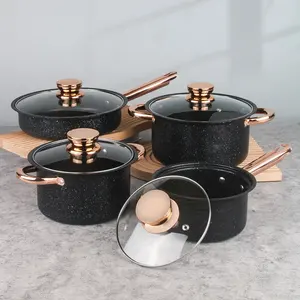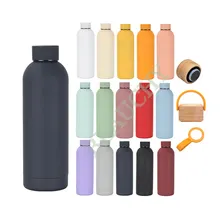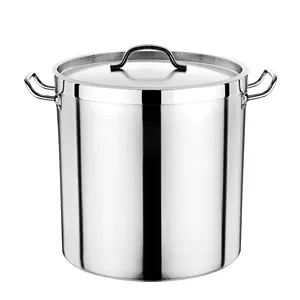For centuries, stone cooking pots have been part of many cultures. They were easy to make with locally available materials such as granite stones and clay. However, as years went by, the definition and manufacturing process of a stone cooking pots changed a little bit. The first definition of stone cooking pots and pans is that they are pieces of cookware made from a stainless steel or aluminum core coated with a thin mineral-based surface. The surface contains stone particles, diamond, marble, ceramic, titanium, or porcelain. This strong but breakable mineral layer doesn't affect the taste of food and improves the pot's heat distribution and retention properties. Another definition of a natural stone cooking pot is any cookware carved from stones. These traditional cookware pieces have been around since the dawn of time and are mostly small and mainly used for medicinal purposes. Furthermore, fancy restaurant owners purchase them to enhance the flavor of specific traditional dishes.
Why should professional chefs buy stone cooking pots?
There are several reasons why professional chefs choose stone cooking pots over cast iron or aluminum cookware. The first benefit is stoneware like granite stone cooking pots are known for their excellent heat distribution and retention properties. They absorb heat slowly and distribute it evenly, which is ideal for slow cooking, simmering, and braising dishes such as ragu and Bolognese. This often results in flavorful, tender and well-cooked dishes.
While quality Chinese stone cooking pots are excellent for slow cooking, their versatility cannot be ignored. Stone pots are multipurpose and can be used for boiling, stewing, baking, and roasting. That is not all. Some types of stone pots are suitable for open flames, making them a go-to option for a wide range of cooking environments such as sautéing, browning and outdoor cooking.
In addition to versatility and slow cooking, many customers appreciate the natural and traditional aspects of stone cooking pot. These pots have been used for centuries in various cultures, and some individuals value the connection to traditional cooking methods. Besides that, some cultures believe minute minerals scraped off the pots during the cooking process have healing properties.
Lastly, when properly cared for, stone cooking pots are durable and long-lasting. They are less prone to scratching and can withstand high temperatures. Nevertheless, stone cooking pots coated with polytetrafluoroethylene (PTEF) wear out faster when exposed to temperatures exceeding 500 degrees Fahrenheit and when used with metallic spoons.
How to take care of stone cooking pots?
Taking care of stone cooking pots is crucial to ensure their longevity and optimal performance. First, before using a new stone cooking pot, season it to prevent the mineral layer from cracking during initial use. Seasoning involves soaking the pot in water for a few hours and then letting it air-dry completely. Secondly, clean the stone pot with mild dish soap and warm water. Avoid using scouring pads or harsh cleaning agents that can damage the pot's surface. Finally, avoid exposing the pot to extreme temperature variations, such as placing a hot pot on a cold surface or immersing it in cold water immediately after cooking.








































 浙公网安备 33010002000092号
浙公网安备 33010002000092号 浙B2-20120091-4
浙B2-20120091-4